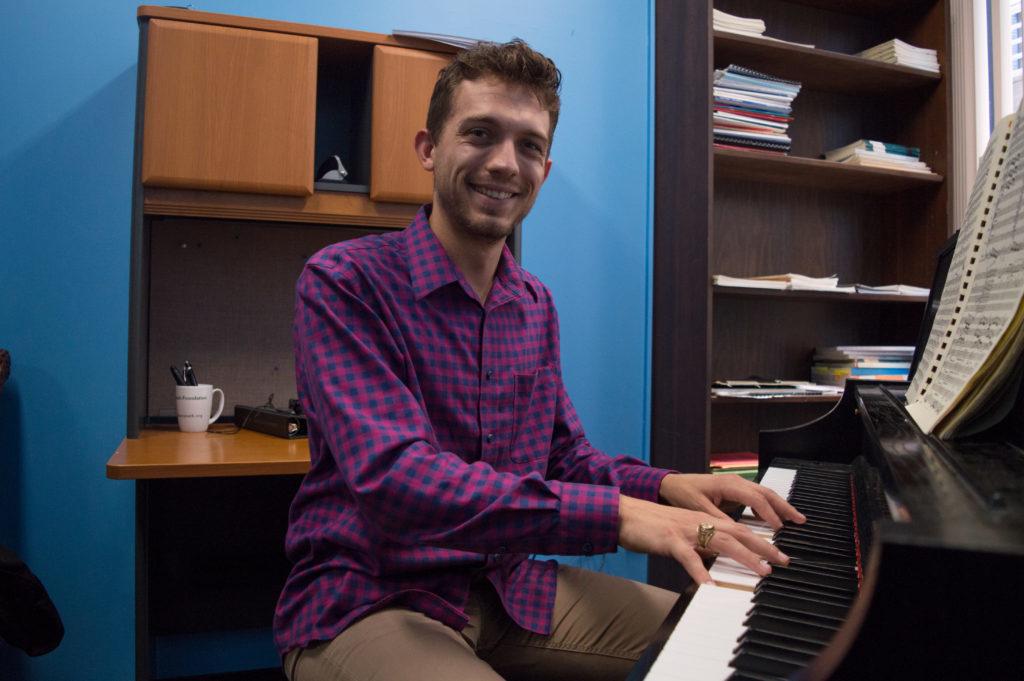The music program, now housed under the Corcoran School of Arts and Design, will start the fall semester on a positive note with a new choir director and a hopeful outlook from faculty who say there are opportunities for expansion in the program’s new home.
Students and faculty said the merger with the Corcoran would give the department the opportunity to expand the reach of the music department on campus after it suffered heavy budget cuts in the past few years.
Sanjit Sethi, the Corcoran’s director, said the merger of CCAS arts programs – dance, interior design, theater and music – and the Corcoran will allow students in both schools to interact with more faculty and for faculty to receive more support through funded research groups. He said the Corcoran is designed to host all of GW’s creative degree programs.
“The merger of all of these creative disciplines provides an opportunity to build a school with an excellent international reputation that brings together our students, faculty and alumni with a profound impact to GW and beyond,” Sethi said in an email. “This is a community that will be shaped by the Corcoran faculty’s individual and collective commitment to excellence and to building something that is greater than the sum of its parts.”
“Championing new music, championing collaboration across different disciplines of fine arts within the Corcoran, those are things I’m really passionate about seeing come to fruition.”
Officials finalized the merger between CCAS arts programs and the Corcoran in July. GW absorbed the art school in 2014.
The move means the music department, which had its funding slashed by 40 percent in 2015, will start a new chapter in the Corcoran. As part of the merger, the school’s faculty conducted a complete review of its bylaws in January.
Blake Clark, the new director of University Singers, the music department’s choir, said he hopes to work with other fine arts programs on collective projects during his first year in the position.
“Championing new music, championing collaboration across different disciplines of fine arts within the Corcoran, those are things I’m really passionate about seeing come to fruition,” Clark said.
Clark said GW may not be known for its music prowess, but he plans to reach out to students of all interests and majors to broaden the University’s appreciation for the fine arts in his new position.
“I see my role as personally to educate and teach the next generation of students who will become professionals,” Clark said. “GW is full of pre-law and pre-med and political science people and I think it’s such a great opportunity to sort of groom the next generation of leaders into really valuing what we do in fine arts.”
After former choir director Giselle Becker announced her resignation last spring, Robert Baker, director of the music department, began a search for the vacant position. Although no concrete changes have so far occurred in the music department as a result of the merger, Baker said he sees a wealth of potential in the blending of the schools.
“There are undiscovered intersections, that’s the whole reason we do this.”
“The opportunities to learn and make music are the same,” Baker said. “But there are little glimmers of evidence that we’re going to be able to do things with students in their study and their performances that we weren’t able to do before.”
One example, Baker said, is that this fall the department will add a new faculty member who will specialize in interactive design. The new course – Sound Design – will have some class sessions in the music department’s home in Phillips Hall and some in studios at the Flagg Building, the Corcoran’s headquarters on 17th Street.
Baker said the merger will allow the arts to work together in ways that professors and students hadn’t previously considered.
“The vision of the Corcoran is that there are creative disciplines that look like they don’t fit together,” Baker said. “That’s the exciting part, because we do fit. There are undiscovered intersections, that’s the whole reason we do this.”
Ning Yu, the chamber music director and a professor of piano, said she hopes the newly-melded programs will spark projects across the arts disciplines.
“There can be learning experiences from each other,” Yu said. “The music department, they have concerts. If the visual artist could come and somehow they struck up projects together, I think this would be one of the most direct and beneficial outcomes right from the start.”





